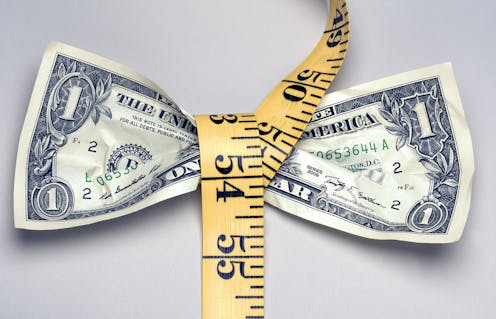Jobs report hints that Fed policy is paying off – and that a 'growth recession' awaits
- Written by Christopher Decker, Professor of Economics, University of Nebraska Omaha

The latest jobs report is in, and the good news is Federal Reserve policy on inflation appears to be working. The bad news is Fed policy on inflation appears to be working.
The March 2023 jobs report reveals[1] that the U.S. economy added 236,000 jobs during the month – roughly in line with expectations[2]. A trend does appear to be emerging as the U.S. central bank’s efforts to slow the economy down and tame inflation appear to finally be working on the labor market, with some companies feeling the effect of increased business costs.
While that will calm the nerves of monetary policymakers, it does raise the prospect of some economic pain ahead – not least for those who will indeed lose their jobs. And for the wider economy, it could also signal another slightly unwelcome phenomenon: the “growth recession.”
What is a growth recession?
Growth recessions occur when an economy enters[3] a prolonged period of low growth – of say 0.5% to 1.5% – while also experiencing the other telltale signs of a recession, such as higher unemployment and lower consumer spending. The economy is still expanding, but it may feel just like a recession to regular people. Some economists consider the 2002 to 2003 period[4] to have been a growth recession.
For now, the job market is still relatively robust. In March, the unemployment rate even edged downward very slightly to 3.5% from 3.6% the previous month.
Effectively, in terms of job additions, this still-healthy increase nevertheless does suggest a slowdown in hiring. The 236,000 jobs added in March is down from the 326,000 and 472,000 added in February and January, respectively.
A slowdown has been anticipated and suggested by other data for some time now. Eye-grabbing headlines about bank failures[5] and layoffs in the tech sector[6] also signal a slowdown.
Other data hint at more employment pain to come. The February Job Openings and Labor Turnover[7] report from the Bureau of Labor Statistics posted a job openings number below 10 million for the first time since May 2021 – a downward trend that has been in place since December 2021, when openings peaked at 11.8 million.
Meanwhile, the U.S. Census Bureau recently reported that new manufacturing orders fell by 0.7% in February 2023. Indeed new orders declined in three of the last four reported months, and prior to that, orders growth had been sluggish at best[8].
In terms of sectors, job declines in construction – down by 9,000 – and manufacturing – down by 1,000 – are as expected, as both sectors are sensitive to interest rate increases.
It is quite likely that such declines will continue in coming months.
Other sectors posted substantial gains. Health services were up 50,800, and leisure gained 72,000. However, these gains are still smaller than in previous months.
What this means for Fed policy
This report seems to suggest that Fed actions to slow the economy are working, even though inflation still remains well ahead of its 2% target[9].
I believe this probably won’t significantly alter Fed policy. Indeed, it suggests that the year-old campaign of using aggressive interest rate hikes to tame inflation appears to be paying dividends. The slow drip of data proving this allows monetary policymakers to manage the economy as they try to provide a so-called “soft landing.”
If the April jobs report is similar to March’s, and barring any unusual events between now and its release in May, I expect the Fed to inch rates up very slowly, likely by another quarter basis point.
Where this leaves the economy as the year progresses, only time – and more data – will tell. But from where I stand, the economy looks to be heading toward a downturn by the fall. The question is whether it will take the form of a mild recession – which will include periods of economic shrinkage – or whether, as I suspect, it will be a low-growth recession. Either way, it will involve some pain.
References
- ^ jobs report reveals (www.bls.gov)
- ^ in line with expectations (www.cnn.com)
- ^ occur when an economy enters (www.forbes.com)
- ^ consider the 2002 to 2003 period (www.investopedia.com)
- ^ bank failures (www.bankrate.com)
- ^ layoffs in the tech sector (www.cnbc.com)
- ^ Job Openings and Labor Turnover (www.bls.gov)
- ^ sluggish at best (www.census.gov)
- ^ ahead of its 2% target (www.cnbc.com)
Authors: Christopher Decker, Professor of Economics, University of Nebraska Omaha

